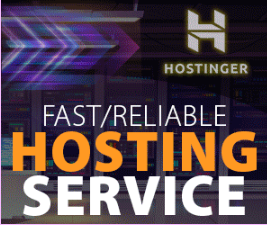Table of Contents
ToggleIntroduction
Starting a cloud kitchen requires proper financial planning to ensure smooth operations and long-term success. This guide will cover everything you need to know about budgeting, startup costs, and financing options. Whether you are bootstrapping or seeking external funding, this guide will help you plan your budget efficiently and explore ways to maximize profits.
1. Understanding the Startup Costs for a Cloud Kitchen
Launching a cloud kitchen involves several initial costs. Knowing these helps you plan your budget accurately and avoid financial pitfalls.
Key Expenses:
- Kitchen Setup: Purchase or lease essential equipment like ovens, refrigerators, and packaging tools.
- Rent and Deposits: Pay security deposits and set up recurring rent payments for your kitchen space.
- Licensing and Permits: Obtain the necessary food business licenses, safety certifications, and local permits.
- Marketing and Branding: Invest in branding, such as logo design, website creation, and social media ads to promote your brand.
- Inventory and Supplies: Stock up on ingredients, packaging, and cleaning supplies to kick-start operations.
2. Creating a Detailed Budget Plan for Your Cloud Kitchen
Developing a comprehensive budget plan ensures you are prepared for both fixed and variable expenses.
Budget Categories:
- Fixed Costs: Rent, salaries, and utilities remain constant each month.
- Variable Costs: Ingredients, packaging, and delivery fees fluctuate based on sales volume.
- Marketing Costs: Allocate funds for digital marketing campaigns and influencer partnerships.
- Contingency Fund: Keep 10-15% of your total budget for unforeseen expenses or emergencies.
- Cash Flow Projections: Forecast your expected revenue and expenses for the first 6-12 months to plan cash management.
3. Funding Options for Your Cloud Kitchen Startup
You have several ways to finance your cloud kitchen depending on your growth goals and business model.
Funding Sources:
- Bootstrapping: Use personal savings or loans from friends and family.
- Small Business Loans: Explore loans from banks or apply for government grants.
- Angel Investors or Venture Capital: Seek external investors to fund a scalable or high-growth model.
- Crowdfunding Platforms: Raise funds through platforms like Kickstarter or Indiegogo by offering rewards or exclusive discounts.
- Delivery Partner Programs: Partner with delivery platforms that offer financial support or commission-based incentives.
4. How to Maximize Profitability with Cost Control
Implementing cost-control strategies ensures you remain profitable.
Tips to Reduce Costs:
- Optimize Inventory Management: Use software to track supplies and minimize waste.
- Negotiate with Suppliers: Secure bulk discounts for ingredients and packaging.
- Use Energy-Efficient Equipment: Lower utility costs with energy-saving appliances.
- Collaborate with Shared Kitchens: Share kitchen space to reduce rent and equipment costs.
5. Setting Financial Goals and KPIs for Your Cloud Kitchen
Tracking key performance indicators (KPIs) helps you measure financial success and adjust strategies accordingly.
Key Metrics to Track:
- Break-Even Point: Calculate how soon your revenue will cover your operational costs.
- Profit Margins: Aim for a 30-35% profit margin on each menu item.
- Average Order Value (AOV): Increase AOV with combo deals or upsell strategies.
- Customer Acquisition Cost (CAC): Track how much it costs to acquire a new customer and optimize marketing spend.
6. Managing Cash Flow and Avoiding Financial Pitfalls
Effective cash flow management ensures you don’t run out of funds when you need them the most.
Tips to Manage Cash Flow:
- Monitor Daily Sales: Track revenue to identify trends and adjust spending accordingly.
- Maintain a Cash Reserve: Keep 3-6 months of operating expenses in reserve.
- Use Accounting Software: Automate bookkeeping with tools like QuickBooks or Xero.
- Control Supplier Payments: Negotiate clear credit terms with suppliers to avoid cash crunches.
7. Leveraging Technology for Financial Efficiency
Use technology tools to streamline financial operations and improve efficiency.
Recommended Tools:
- POS Systems: Manage orders, payments, and customer data seamlessly.
- Inventory Management Software: Track ingredients to prevent overstocking or shortages.
- Accounting Software: Automate tax filing, invoices, and financial reports using tools like QuickBooks or Xero.
- Delivery Platform Analytics: Use data from Uber Eats or Foodpanda to analyze customer preferences and sales trends.
8. Building a Sustainable Financial Model for Long-Term Growth
A sustainable financial model ensures your cloud kitchen thrives long-term.
Steps for Long-Term Growth:
- Expand to New Locations: Open kitchens in new delivery zones with high demand.
- Introduce Subscription Models: Offer meal subscriptions for consistent, recurring revenue.
- Launch Virtual Brands: Run multiple virtual brands from a single kitchen to reach different customer segments.
- Monitor Trends: Stay updated on industry trends and adapt your menu to changing customer preferences.
Conclusion
Budgeting and financing are essential elements of starting and running a successful cloud kitchen. By carefully planning your startup costs, managing cash flow, and exploring funding options, you can set your business up for profitability and growth. Monitoring KPIs, reducing unnecessary expenses, and leveraging technology tools will ensure financial stability, paving the way for long-term success.



